Curious about the most intriguing desert birds in the world? Here’s a fun list of birds that live in the desert.
Many wonder how desert birds can survive in such barren conditions as in a desert without water.
Still, through evolution, these animals experienced some physiological adaptations that made life in the desert possible.
Today’s article is about the incredible birds found in the desert, their distribution, and their diet. We will also talk about these bird adaptations.
But First…What Is a Desert?
A true desert is an area of land that gets no more than ten inches of annual precipitation and evaporates more than 10 inches per year. The key here is dry, not hot!
The largest desert in the world is not the Sahara, the biggest desert in Africa, the Great Basin, the largest desert in the US, or Patagonia, the greatest desert in South America, but the….Antarctic polar desert.
How Can Desert Birds Survive Without Water?
It’s not that desert birds don’t drink water; many do, but from different sources than the usual places, like lakes or rivers.
There are two types of desert birds—drinking and non-drinking.
The first group drinks water from areas they might find in their arid environments. They may also travel long distances to find those places. However, these animals have greater heat tolerance through bird adaptations than the other group.
The second group, the non-drinking species, consumes their required daily water through food sources, and curiously their bodies adapted to ensure they won’t lose much water as the birds that drink water regularly.
A study suggests that the “total evaporative water loss—the sum of cutaneous water loss and respiratory water loss—is reduced in desert birds,” helping them thrive in this environment.
19 Intriguing Desert Birds You Need to Know
Here are some curious birds found in the desert in no particular order.
1. Greater Roadrunner – The Best Known Birds of the Desert

Remember the Road Runner character from the popular cartoon Looney Tunes? Yes, it is inspired by the species of real birds!
Greater roadrunners are terrestrial birds that prefer living in dry, scrubby, and barren habitats. They are among the birds of Arizona desert in the United States.
As they are desert birds, they feed on reptiles, snakes, and rodents. They fulfill their moisture needs by consuming the tissues and blood of their prey.
These birds have special glands in front of their eyes that remove excess salt from their body and reduce moisture loss.
2. Cactus Wren
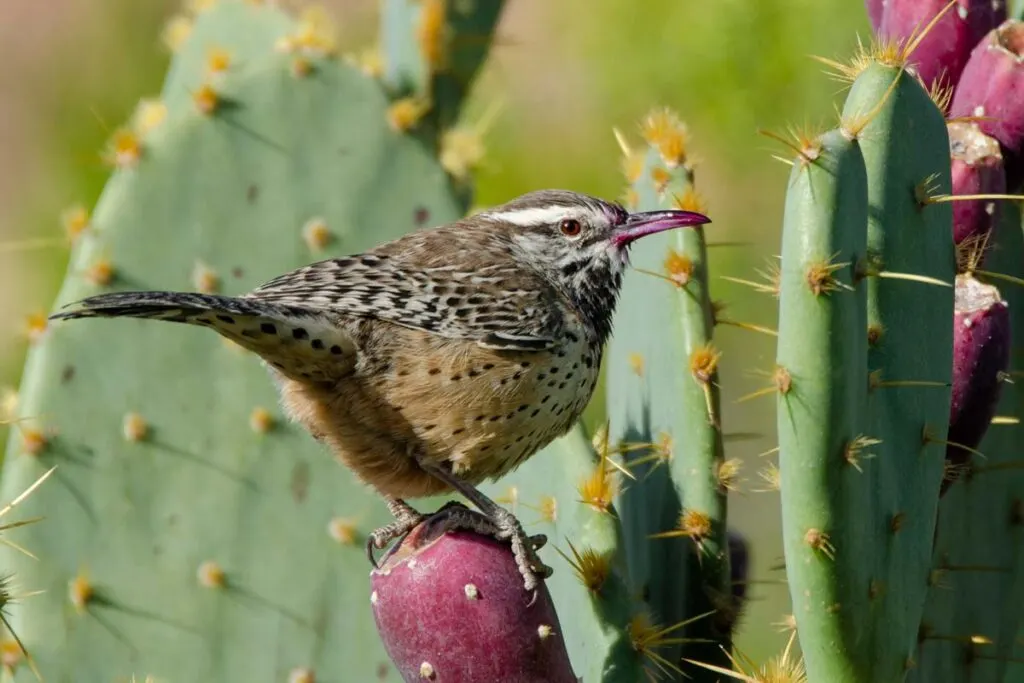
Cactus Wrens are one of the most popular birds of the desert. They are also the state bird of Arizona.
Cactus wrens are found in the Chihuahuan and Sonoran Deserts in Mexico and the United States. You can also find them in the thorny and scrubby regions of Mexico and California.
These desert birds are excellent at turning and pushing rocks in search of their meal. They usually feed on insects like beetles, butterflies, grasshoppers, and spiders.
To keep themselves hydrated in challenging desert conditions, they eat a lot of cactus fruits.
3. Verdin
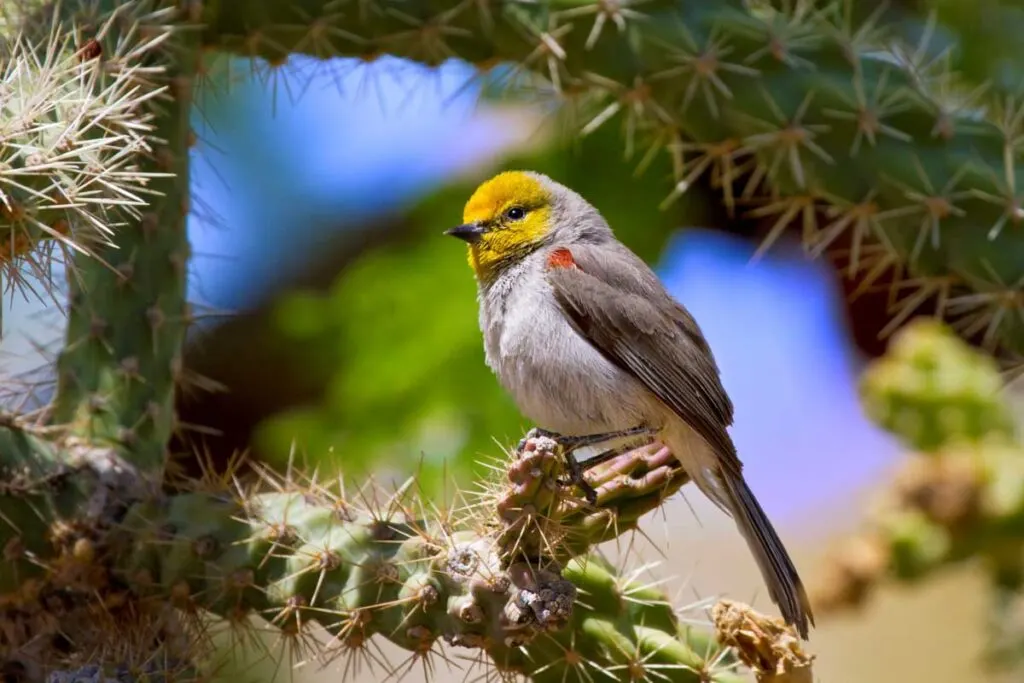
Verdins are found in the American desert region of Sonora, Chihuahuan, and Mojave.
They prefer to live in riparian vegetation and desert washes so that they can have easy access to water.
These birds are non-migratory and spend their entire lives in deserts and arid environments. The diet of these desert birds includes plants, spiders, and other insects.
During winter, these birds feed on berries and fruits. Sometimes, when they are close to a sub-urban region, they steal food from hummingbird feeders.
When they cannot find enough water, they drink nectar from flowers to fulfill their moisture needs.
4. Indigo Bunting
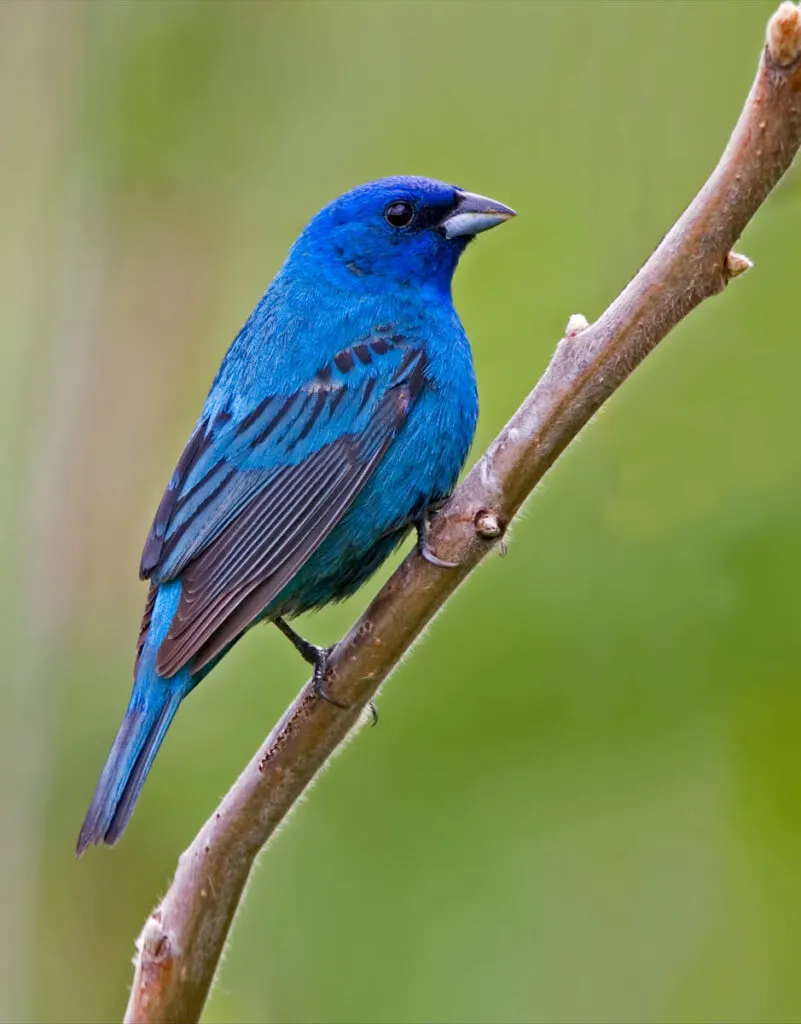
These brilliant blue-colored birds are a treat to the eyes! Indigo buntings are tiny seed-feeding birds that are found in parts of North America and South America.
While they are not common birds in the desert, you can spot them in dry regions during their migration season.
Indigo buntings usually feed on seeds, berries, and insects. These birds don’t require to drink water frequently. In fact, they obtain most of their water from their food.
5. Gila Woodpecker
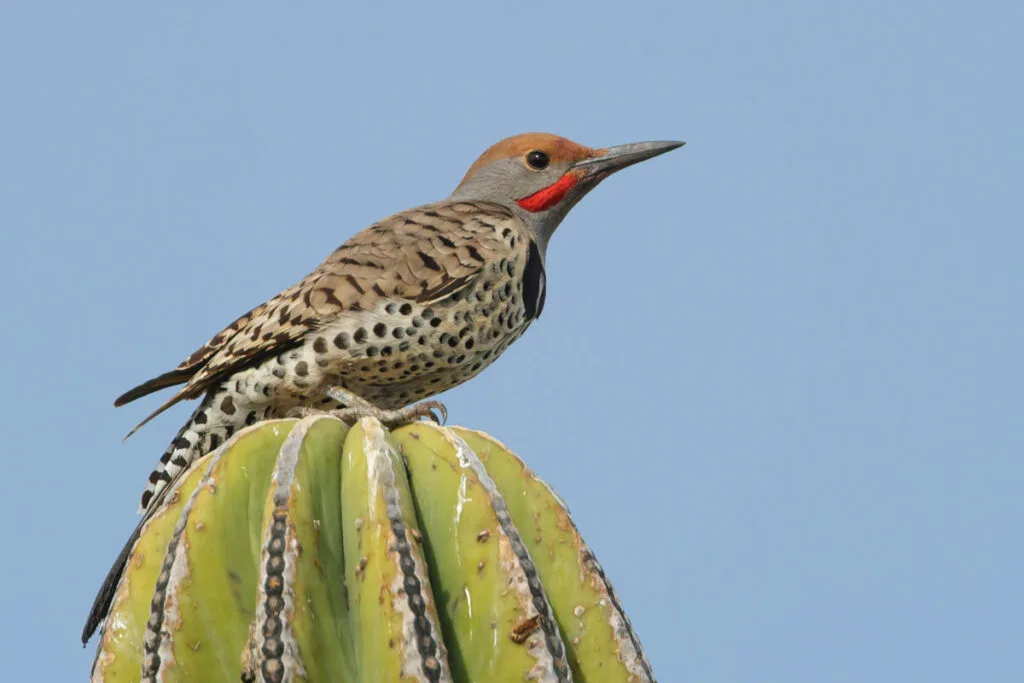
Unlike most woodpeckers who live in wooded areas, Gila woodpeckers can easily thrive in treeless and desert regions.
These birds are usually found in central Mexico and the southwest US.
Gila woodpeckers are omnivorous and feed on various insects, berries, fruits, and even the eggs of other birds.
Being birds of deserts, Gila woodpeckers have efficient kidneys that excrete little to no liquid out of their body. Due to a lack of water, these birds eat cactus fruits to hydrate themselves.
6. Hwamei
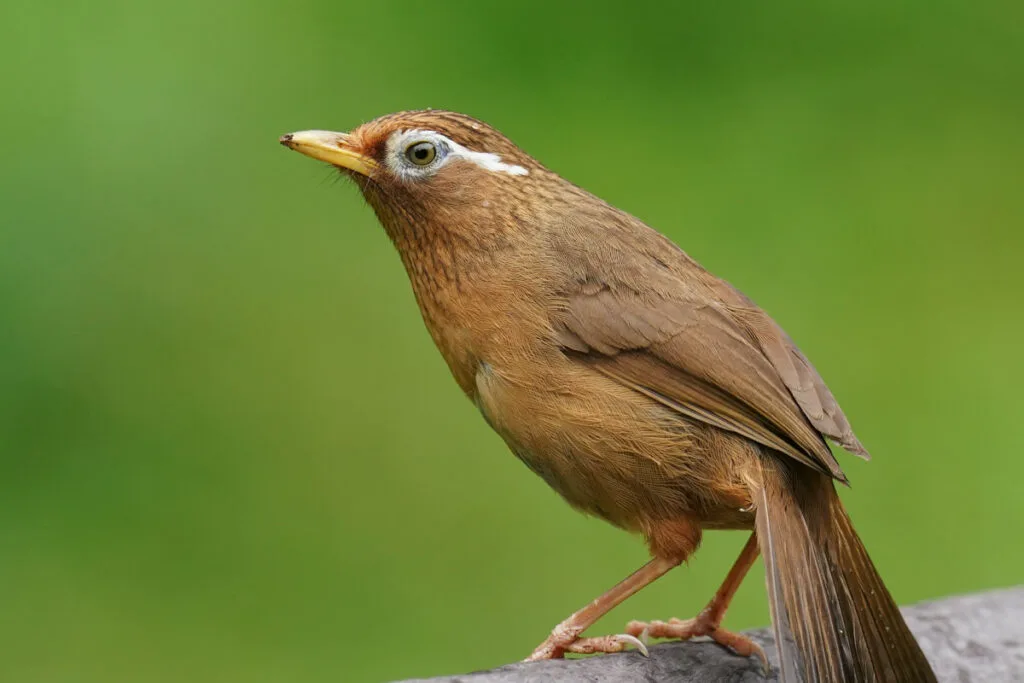
Hwameis, also known as Chinese hwameis, are Asian desert birds. They can be found in China, Laos, and Vietnam.
One of the most unique features of these birds is the white eye-rings that make them instantly recognizable. Because of this, Chinese hwameis are also called ‘painted eyebrows’ in China.
Chinese hwameis feed on insects, plant seeds, and fruits.
7. Cooper’s Hawk
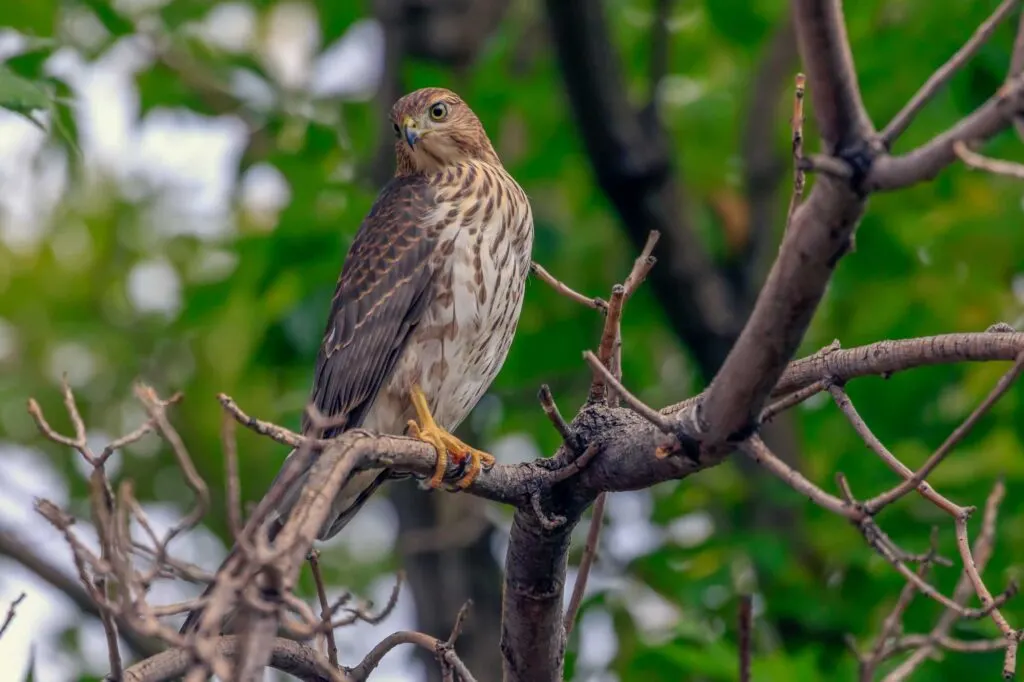
These types of hawks are migratory desert birds. They spend their summers in the regions close to the Canadian borders and then fly to Mexico and Latin America to spend the winter months.
The diet of these birds includes small mammals like bats and other medium-sized birds.
They usually visit riparian vegetation to find water and keep themselves hydrated in challenging weather conditions.
8. Golden Eagle
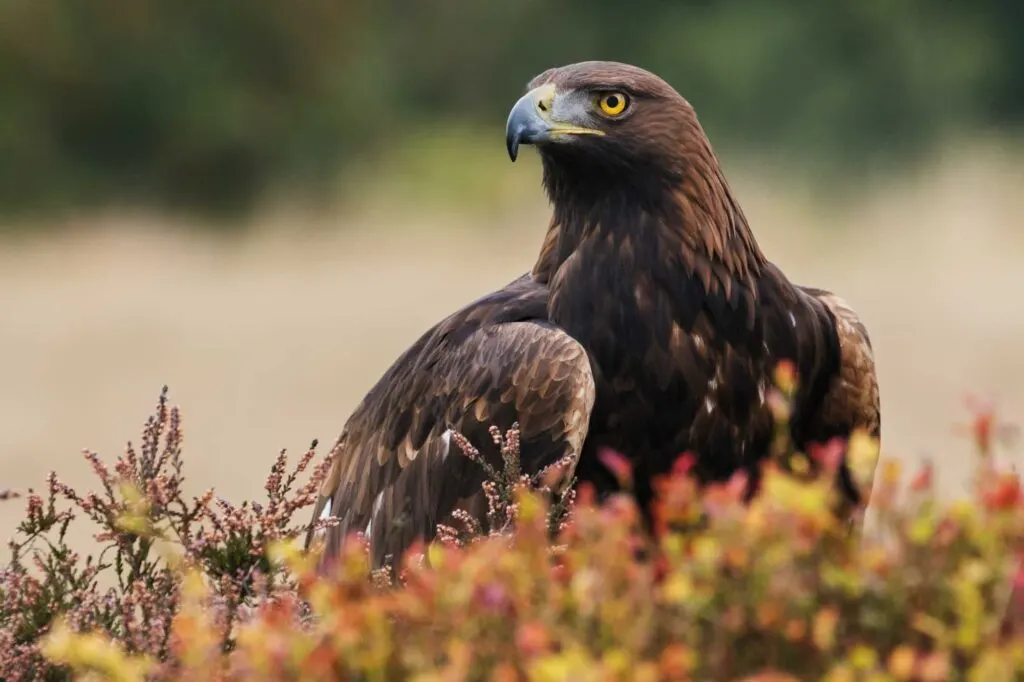
Golden eagles are one of the largest and fastest desert birds in North America.
These, like other types of eagles, are majestic creatures that look highly attractive and dominating. Golden eagles are also a symbol of power, courage, and wisdom.
These apex predators are among the fastest birds and can fly at a speed of up to 200 mph.
Due to their huge size and flying ability, golden eagles are excellent predators and feed on small mammals and other desert birds.
They absorb water from their prey to fulfill their moisture needs.
An interesting fact about golden eagles? Because of their strength and virtues, they have found a place on the Mexican flag!
9. Rosy-Faced Lovebird
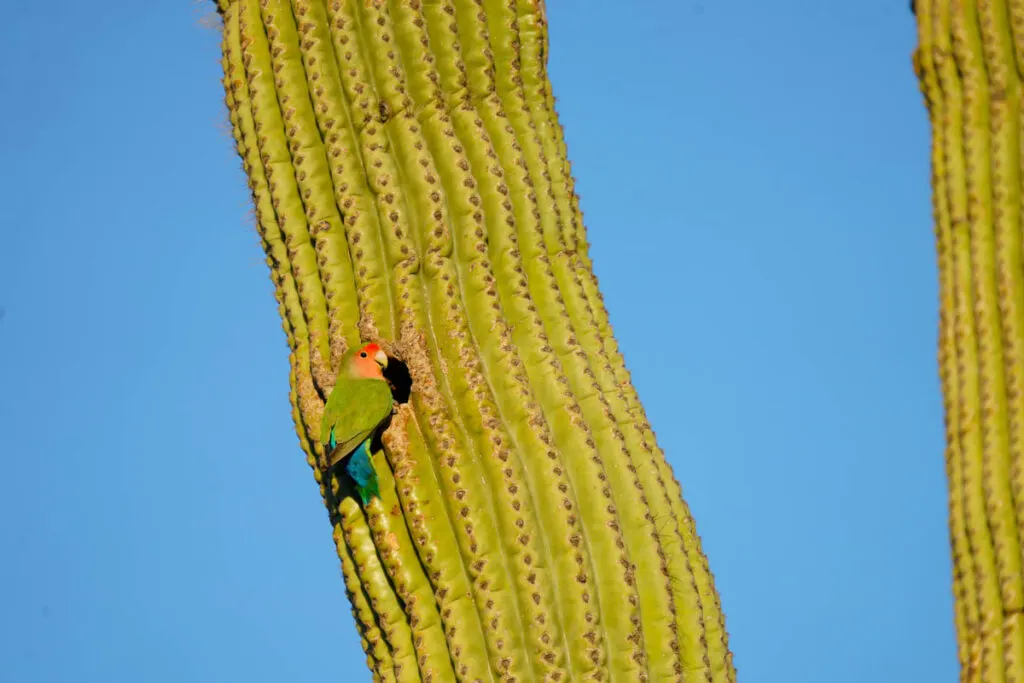
Having distinct rose to peach-colored facial features, these birds are endemic to various South African regions.
These birds love bathing. They are usually in search of streams or rivers. This also helps them meet their moisture requirement.
These birds usually feed on fruits, seeds, and berries. They also enjoy eating crops. Their favorite is millet.
10. Bearded Vulture
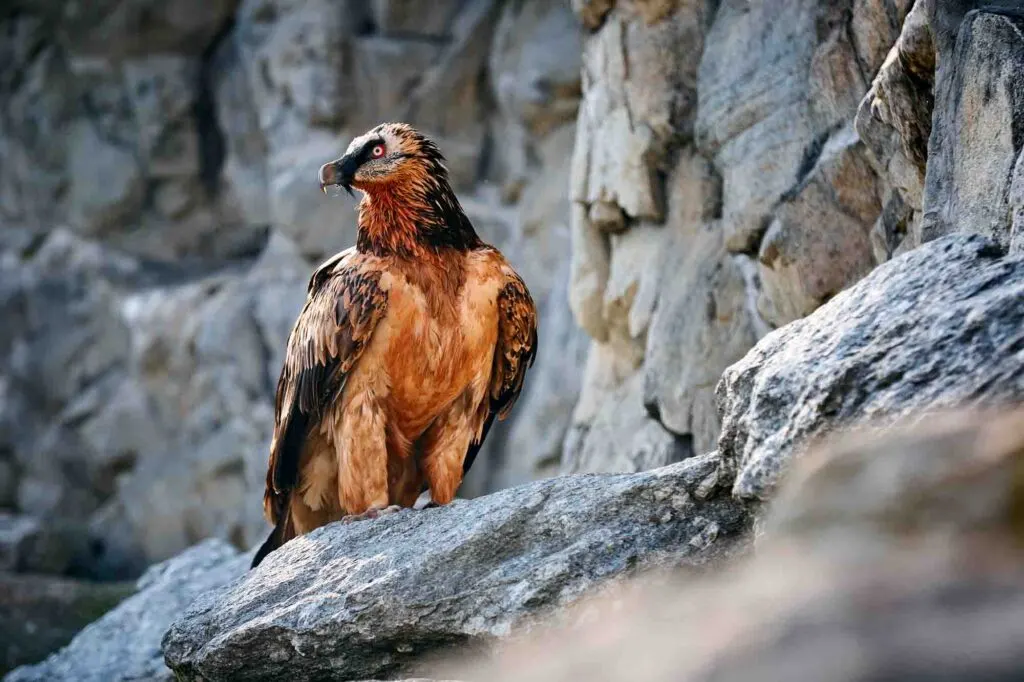
Enormous and powerful, bearded vultures are also known as “devil birds” in various regions.
These large birds of prey are found in the rocky and dry regions of India, southwestern Europe, and Tibet. Bearded vultures are one of the largest birds, even larger than the golden eagle.
Similar to other vultures, bearded vultures are also scavengers that feed on the bones of other dead animals.
They have a powerful digestive system that helps them dissolve the bones and other dead matter these vultures consume.
11. Pin-Tailed Sandgrouse
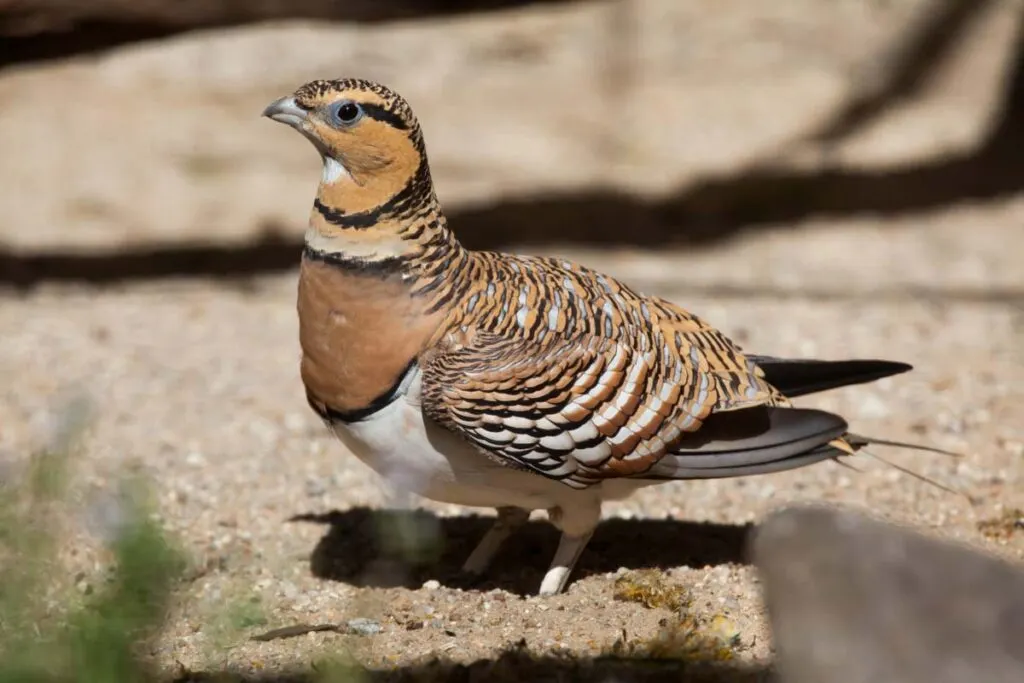
Pin-tailed sandgrouses have two subspecies and are found in southern Europe, the Middle East, northwestern Africa, and parts of Asia.
They prefer living in semi-arid regions at the edge of deserts and stony lands.
A major portion of their diet includes seeds, green shoots, and buds.
In the morning, pin-tailed sandgrouses gather in large flocks and visit their nearest water holes to bathe and drink water.
The male birds collect water in their feathers and bring them to their young ones.
12. Scott’s Oriole
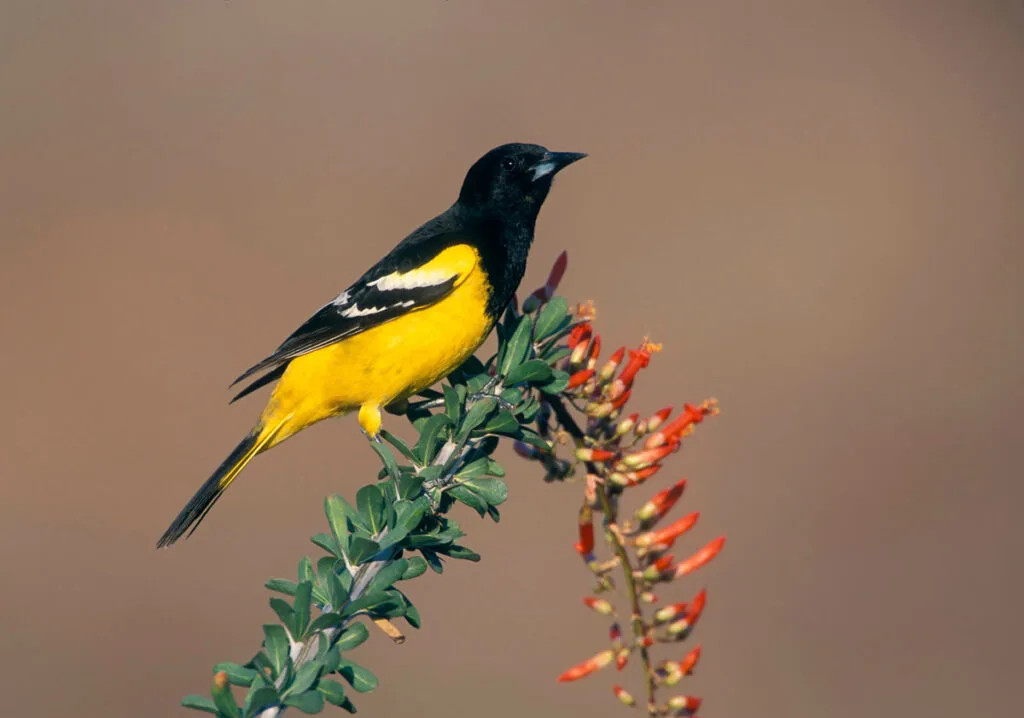
Scott’s orioles are medium-sized desert birds that occupy desert mountain areas and dry woods.
They feed on a variety of insects, including beetles, grasshoppers, caterpillars, and many more.
They get most of their moisture from fruits, berries, and nectar from flowers.
Like most birds living in deserts, Scott’s orioles eat cactus fruits that offer them plenty of water.
These birds have a melodious whistle-like call that can be heard when they occupy valleys in the summer.
13. Ferruginous Pygmy Owl
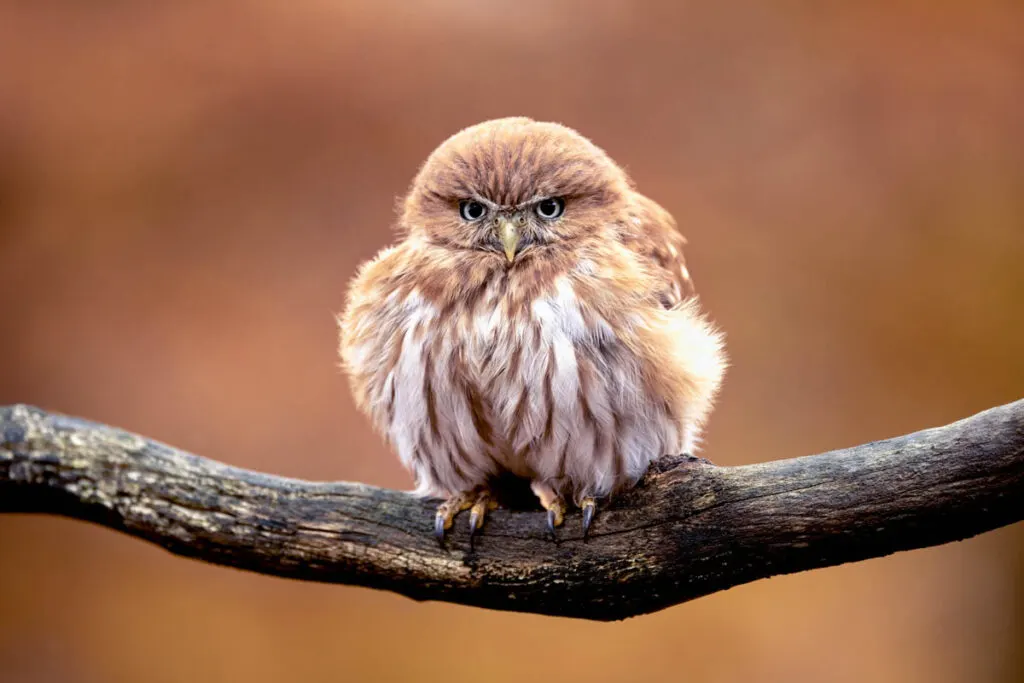
Ferruginous pygmy owls are considered to be an endangered bird species in Arizona.
They are also experiencing a rapid loss in Texas. These birds have long tails, round necks, and unique black lines on their napes.
These types of owls are the most active during the night. Thus, they feed on nocturnal insects like crickets, beetles, scorpions, etc.
They also prey on small rodents, birds, and even lizards and fulfill their moisture requirement from them.
14. Burrowing Owl
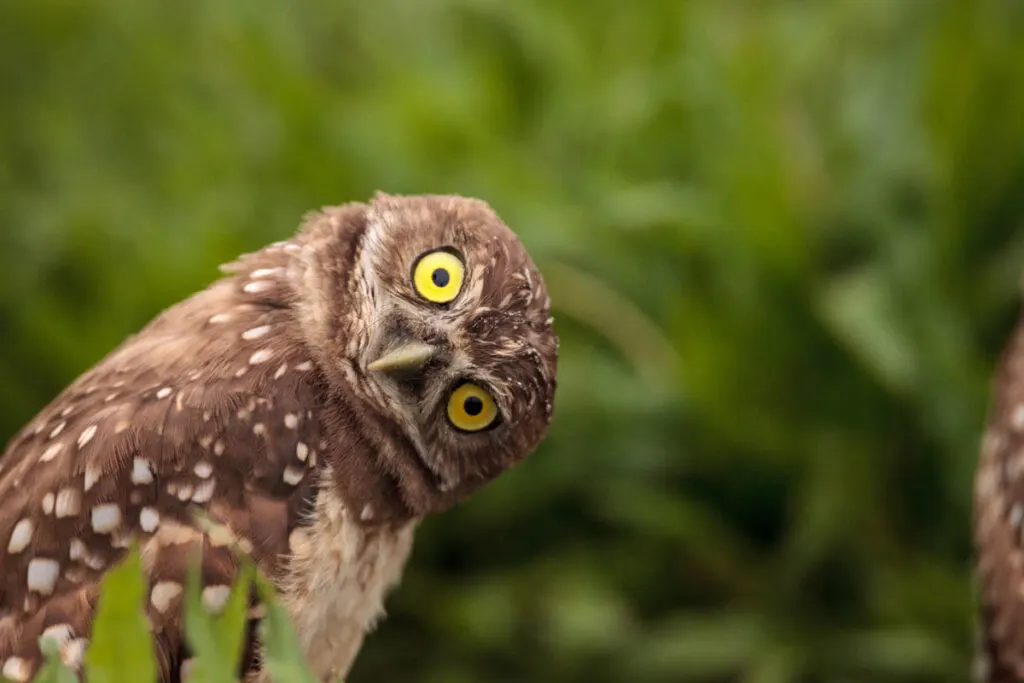
Burrowing owls are one of the most adorable desert birds. These types of owls are tiny and have bright yellow and attractive eyes.
These owls are native to western parts of South America, Mexico, southwestern United States.
These birds dig holes in the ground and make their home inside.
Since they spend most of their time sleeping, staging underground helps them remain cool and avoid extreme weather conditions.
Burrowing owls feed on a variety of insects, including moths, crickets, and grasshoppers. Their diet also includes small mammals and birds.
15. Phainopepla
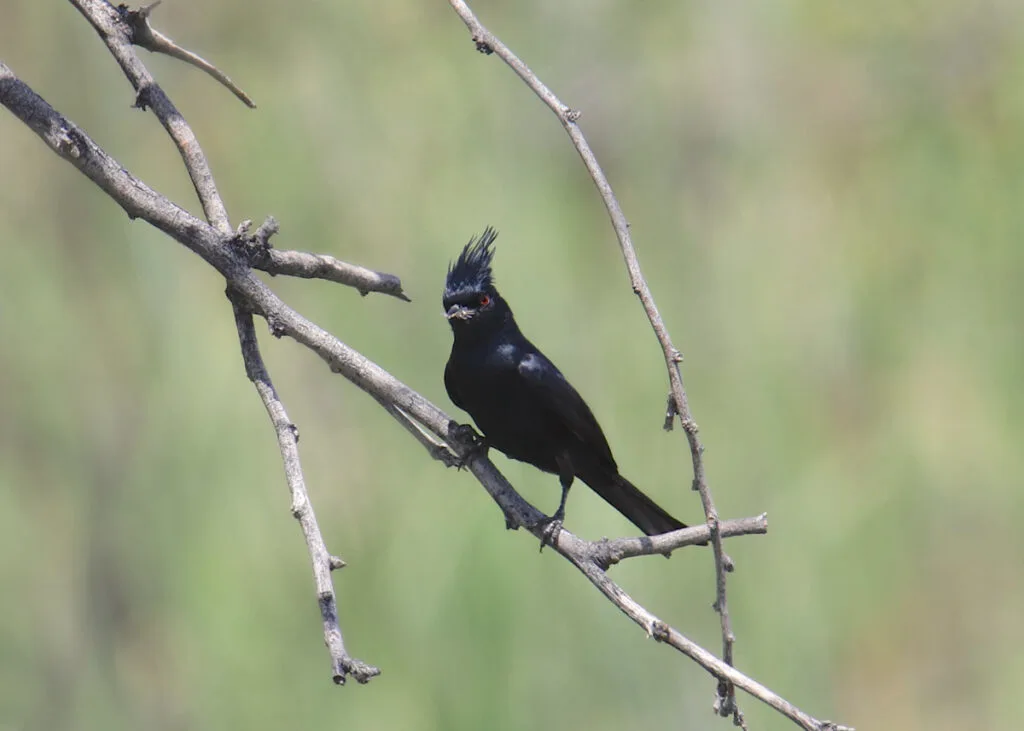
The name of these birds has been derived from the Greek word “phain pepla” which means “shining robe.”
True to their name, male phainopeplas have a glossy appearance, while females are a bit dull.
Being birds of the desert, phainopeplas rarely drink water. They complete their moisture needs from their diet, which mainly includes mistletoe berries.
Phainopeplas can eat almost 1,100 berries a day when available!
16. Osprey
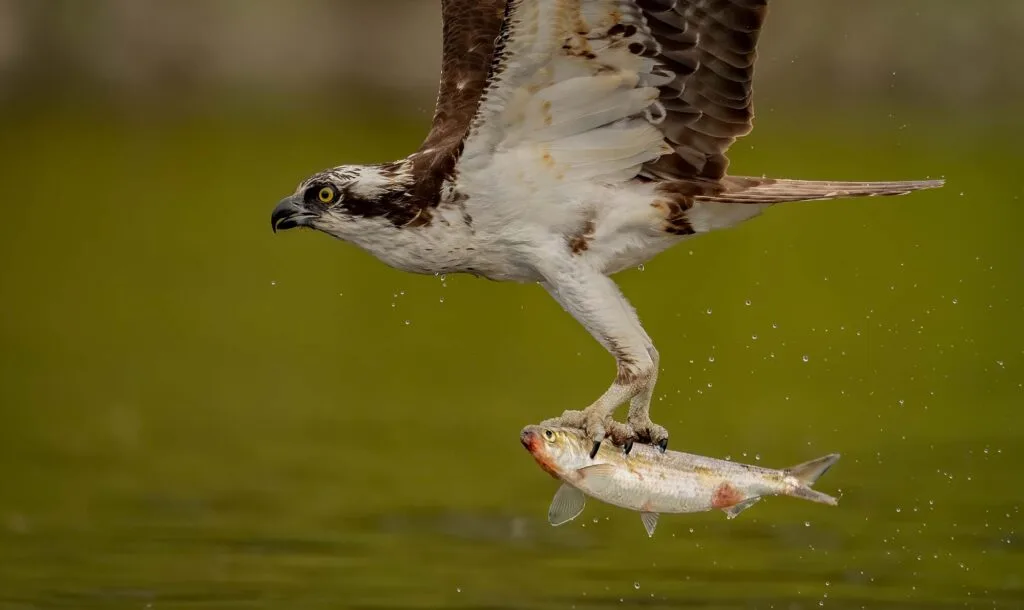
Also known as sea hawks, fish hawks, or river hawks, ospreys are large fish-eating desert birds having a cosmopolitan range.
Ospreys can tolerate a large variety of habitats. Thus, they are found in various parts of the world. Ospreys occupy every continent except Antarctica.
Their diet consists exclusively of fish. They have a special vision that is adapted to see underwater objects.
During the migratory season, ospreys also occupy desert regions. However, they mostly prefer living near a water body where they can find ample food and water.
An interesting fact about ospreys? They are one of the five land-based bird species having a worldwide distribution!
17. Costa’s Hummingbird
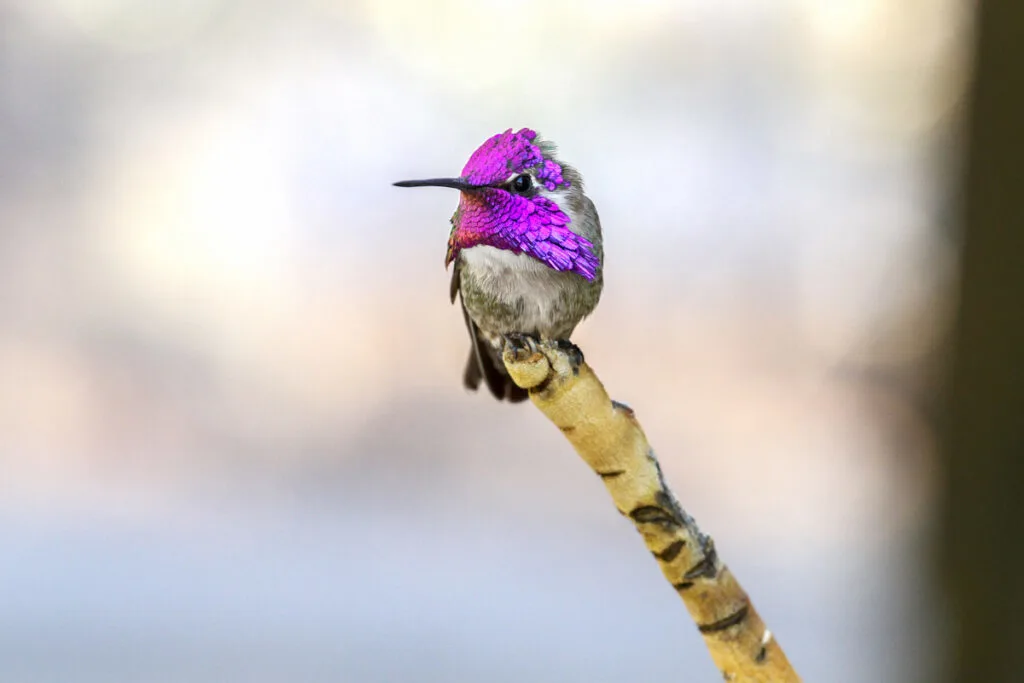
Tiny and with a brilliant purple or green crown, Costa’s hummingbirds are usually found in western Mexico, southwestern US, and Baja.
These types of hummingbirds feed on insects and flower nectars. They also visit their nearest human habitats in search of sugar-water feeders.
Costa’s hummingbirds are fully accustomed to a hot and dry desert environment but can also survive in colder temperatures.
When subjected to lower temperatures, these birds go into a torpid state where their heart rate and body temperature reduce greatly.
18. Gambel’s Quail
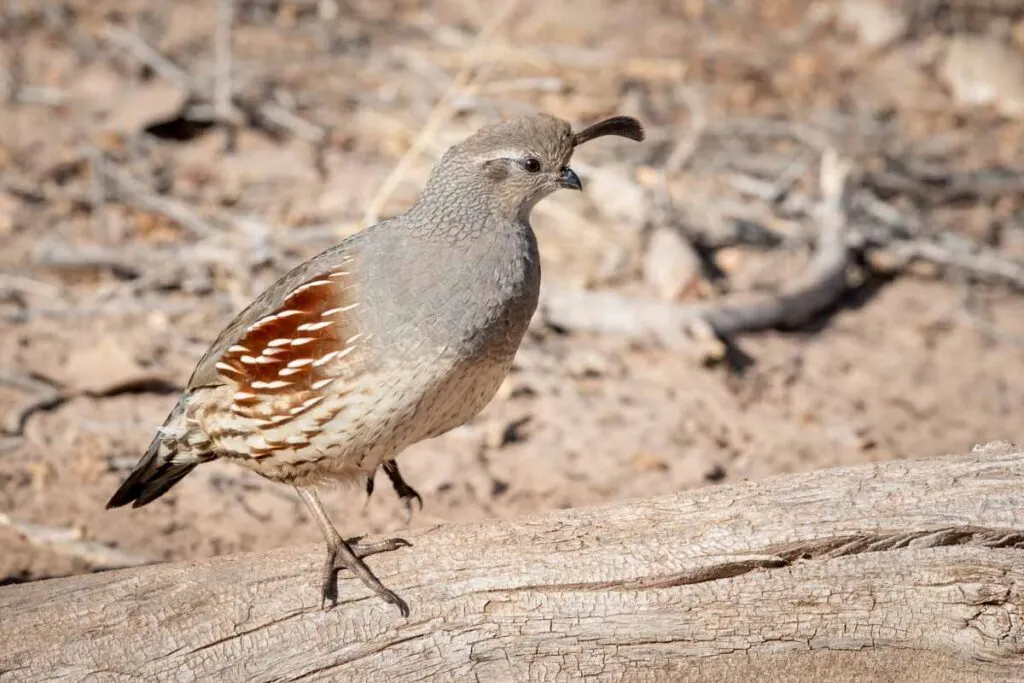
Gambel’s quails are found throughout the southwestern US, mainly in Arizona, California, and Texas.
These birds prefer living under dense trees and shrubs to protect themselves from predators and harsh winds.
Their diet mostly includes plants, berries, and seeds. They consume cacti fruits to fulfill their water requirements.
19. Lucifer Hummingbird
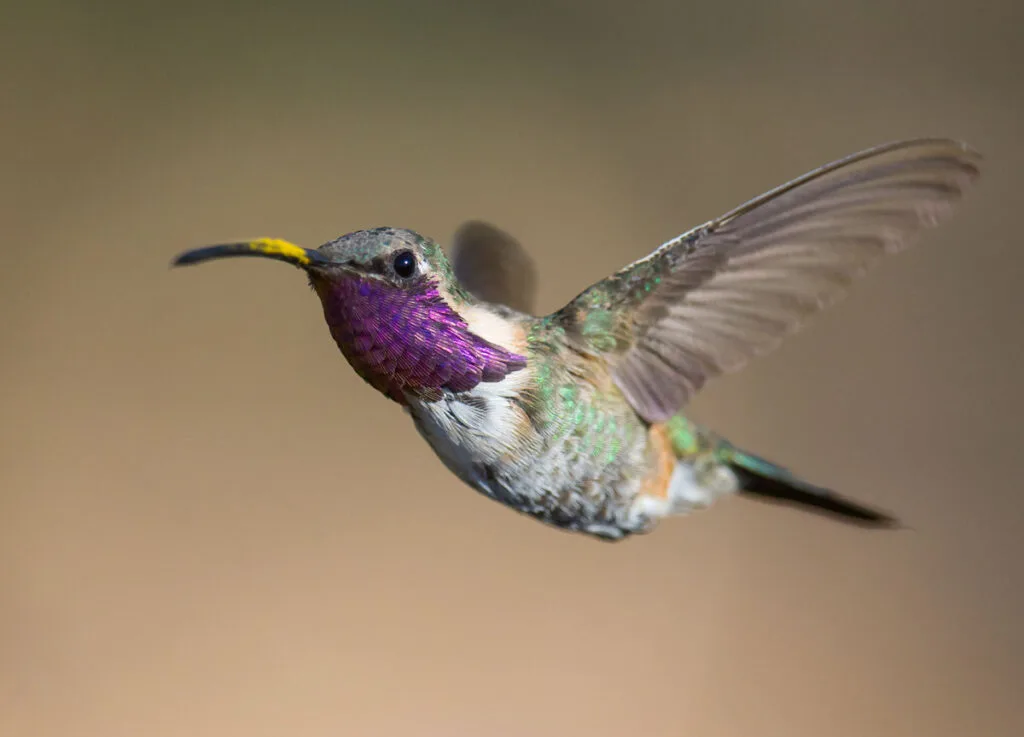
Lucifer hummingbirds are tiny birds with long tails and curved bills.
They live in northern and central Mexico and some parts of southern Arizona, southwestern United States, and have adapted themselves to the warm desert climate.
Lucifer hummingbirds have a shrill shrieking call that they use for warning or communicating with other birds.
To survive in the challenging desert environment, these birds feed on the nectar of flowers like paintbrush, agave, and penstemon.
They also visit human habitats to consume sugar-water mixture from feeders.
Did you enjoy reading about these birds that live in the desert? Then share this article on your social media!
19 Intriguing Desert Birds You Need to Know
1. Greater Roadrunner
2. Cactus Wren
3. Verdin
4. Indigo Bunting
5. Gila Woodpecker
6. Hwamei
7. Cooper’s Hawk
8. Golden Eagle
9. Rose-Faced Lovebird
10. Bearded Vulture
11. Pin-Tailed Sandgrouse
12. Scott’s Oriole
13. Ferruginous Pygmy Owl
14. Burrowing Owl
15. Phainopepla
16. Osprey
17. Costa’s Hummingbird
18. Gambel’s Quail
19. Lucifer Hummingbird

Richard
Wednesday 17th of May 2023
just spotted an unknown bird in the desert near phoenix, az. light grey head, lighter grey chest with light yellow on lower abdomen. some blk and white stripe in side folded wings. don't believe it to be a cactus wren or mocking bird. Help?
Doug
Wednesday 18th of January 2023
I dont think Golden eagles can fly "up to 200 mph". The fastest raptor is the peregrine falcon, and I believe it has been clocked at 135 mph top speed, when in a dive.
Wildlife Explained
Wednesday 18th of January 2023
Hey Doug, thanks for your comment! The fastest raptor is indeed the peregrine falcon, but they can actually reach 200 to 240 mph when diving. As for golden eagles, they can dive at a maximum of 200 mph. You can read more about the fastest birds here.